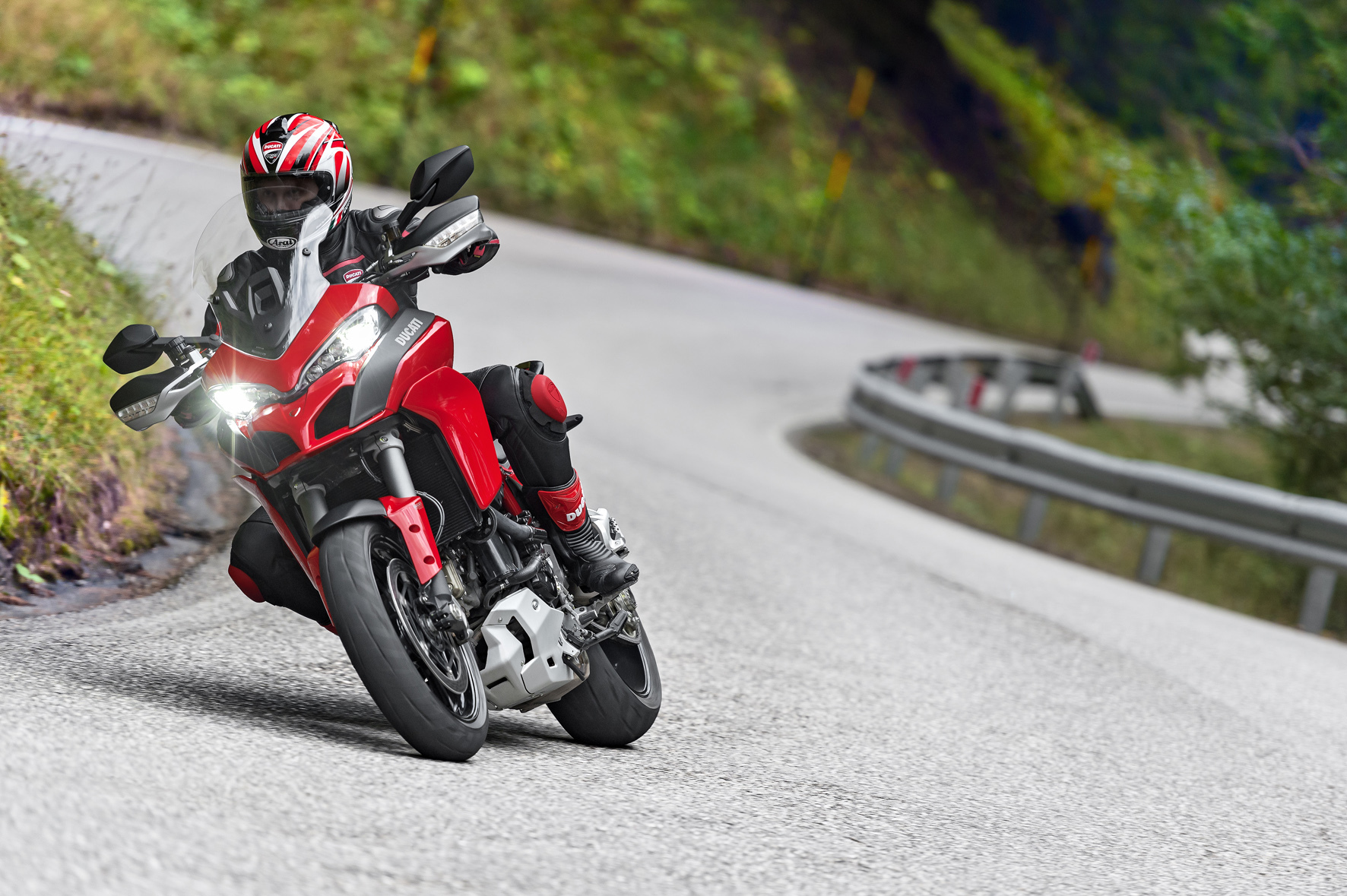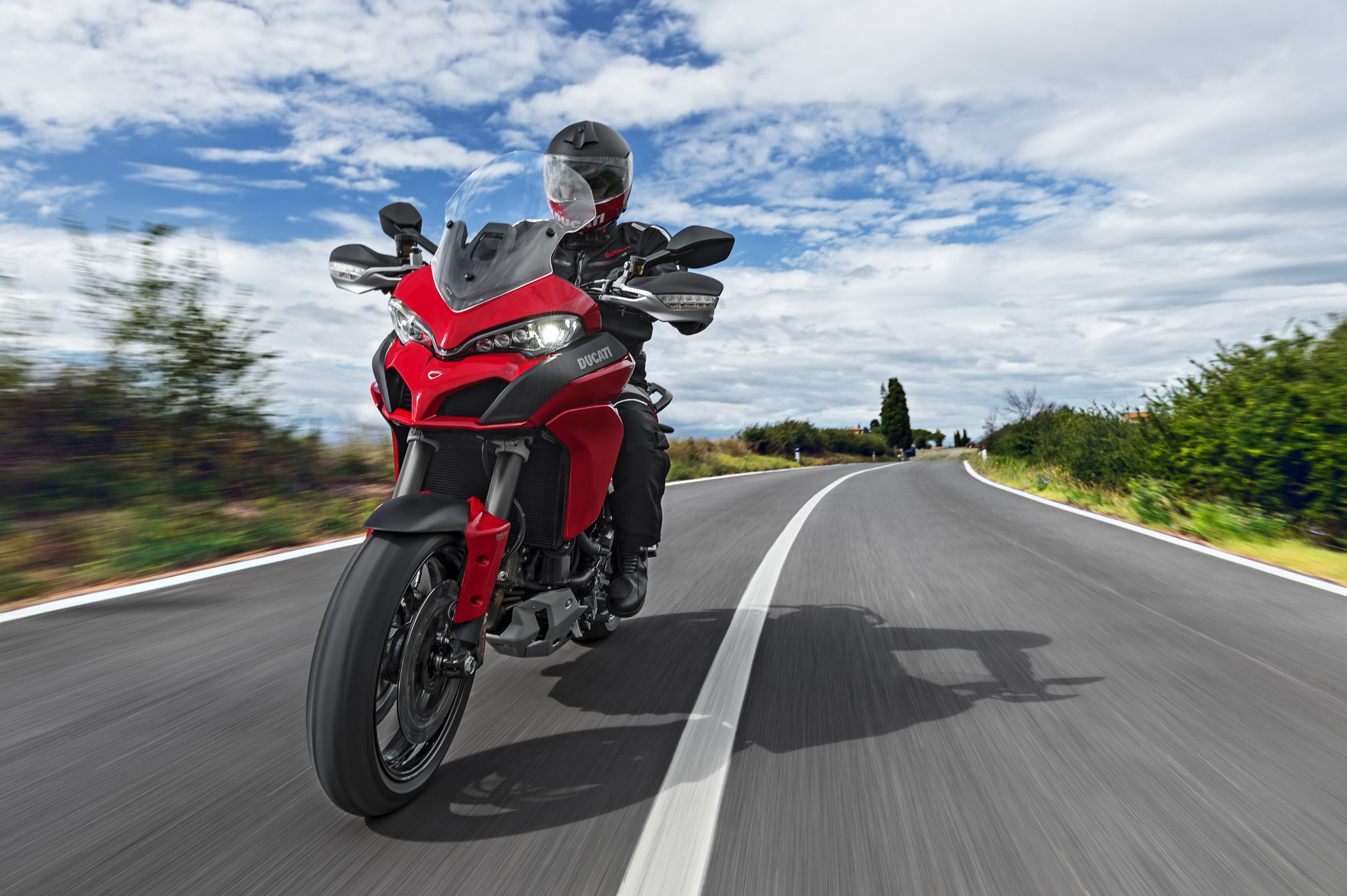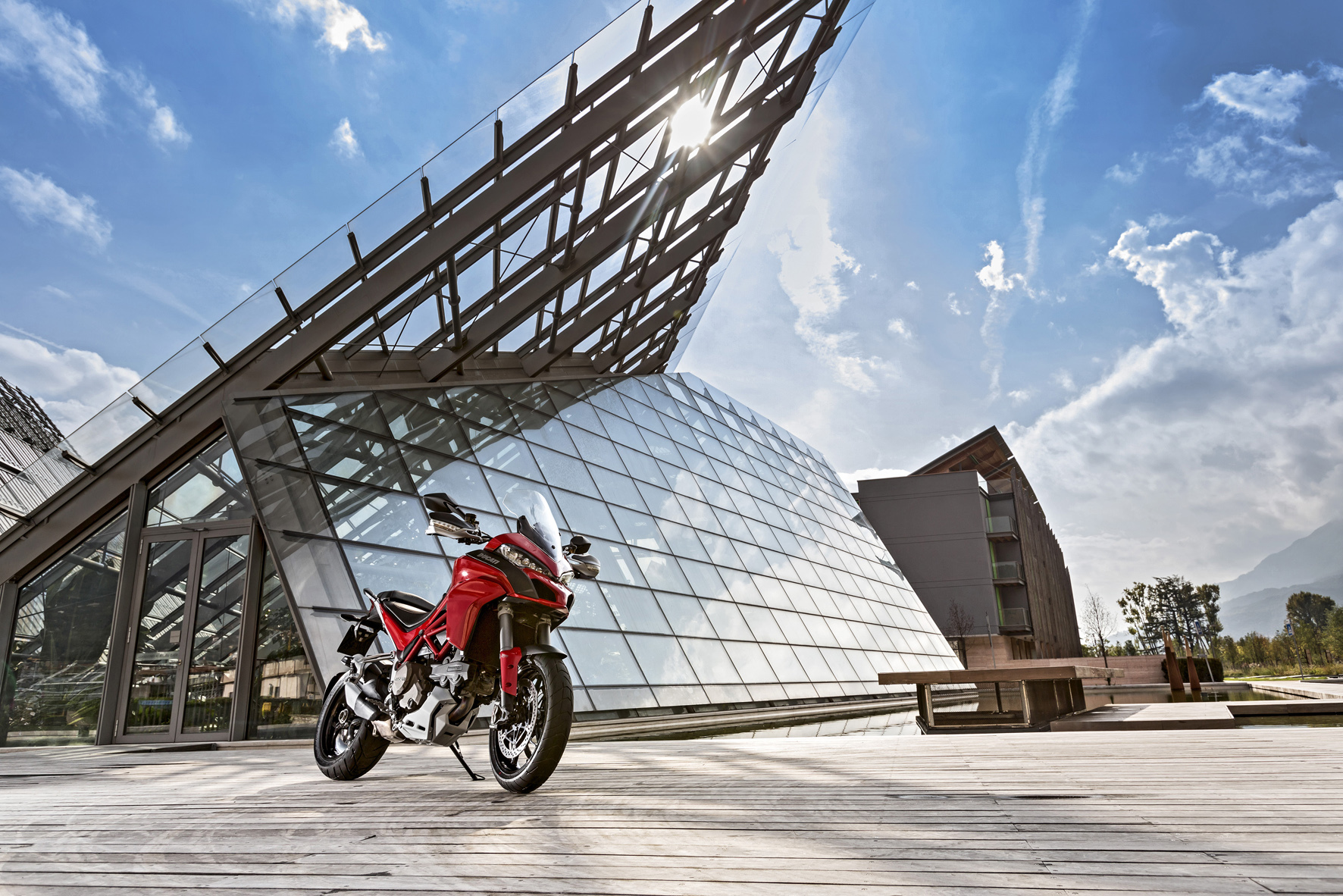Five years ago, Ducati introduced an intoxicating blend of Italian sex appeal, relentless power and an upright riding position.
The Multistrada also had four ‘souls’ – two full-150bhp Sport and Touring modes and the tippy-toe 100bhp Urban and Enduro settings.
Two years later, the Italians loaded the upgraded S version with their imaginatively named Skyhook Suspension (DSS), a semi-active system designed to make the ride quality feel as though the bike is suspended from giant hooks in the sky. See what they did there?
Fast-forward to 2015 and Ducati has totally revised and reintroduced the Multistrada 1200 and the fully tricked-up S model. Brace yourself for plenty of initialisms and acronyms.
The main difference between the two is the uprated DSS Evolution (EVO) on the £2,800 more expensive S. It also benefits from higher-spec Brembo brakes, a colour TFT dashboard and cornering lights (DCL) which throw a broader spread of light into the corners. Oh, and choice of two colours – red or white.
Like the S model, the standard Multistrada 1200 is kitted out with the new generation eight-level traction control (DTC) and wheelie control (DWC) and combined ABS.
Both bikes now have an adjustable saddle and Bosch’s Inertial Measurement Unit (IMU) which measures the roll, pitch and yaw and relays that information to the electronics.
This means that the bike now knows when and how far it is leaning and can adapt the level of assistance required. So you have a much better chance of the ABS saving your bacon if you haul the anchors on mid corner.
These kind of safety systems are intended to appeal to the masses, as are the roomier ergonomics and increased comfort for both rider and pillion.
The later changes aren’t exactly revolutionary, but the 1,198cc Testastretta engine is. Peak power is up by 7% to 160bhp, torque by 9% at 100lb/ft. More than half of that grunt kicks in at just 3,500rpm.
The big news is the Desmodromic Variable Timing (DVT) though (and you thought you’d escaped the initialisms…), technology that until now has only been used in the car industry. It allows a continuous sweep of both the inlet and outlet exhaust valve openings to enhance low speed, low-rev performance without sacrificing the addictive top-end rush that the Multistrada is famed for.
Big twin-cylinder engines aren’t the most flexible, so you still have to knock the six-speed gearbox back a cog or two to even out the lumpiness at town pace, but it certainly doesn’t judder and bog down like the previous model did.
The insane onslaught of power is just as intoxicating in the higher rev range, although the raw character of the sport mode is more linear and less brutal.
The vibrations through the slightly lower saddle are perhaps more noticeable than before, especially between 6,000 and 7,000rpm. With our launch ride in Lanzarote being interrupted with the obligatory photo and video shoot locations, it’s difficult to say whether you would get used to, or annoyed by these sensations after a lengthy motorway stint.
You should be well protected though. The bodywork has been widened to deflect more wind from your lower body and the windscreen is easily adjustable with one hand on the move through a range of 60mm.
I’m over six feet, and while it offers adequate protection, I can only enjoy the quiet zone if I slouch like a moody teenager.
The power delivery is a little temperamental too. A hesitancy in the throttle response is disconcerting and on one occasion, as I rounded a bend on the S, in Sport mode on a constant throttle, there was a distinct, rather abrupt and unexpected drain of power.
It’s reasonable to assume that the traction control was responsible, but as it was only on level four of eight, this level of intervention seems over-cautious and hides the true character of the bike. It’s like an over-protective mother constantly swooping in to save her toddler as he takes his first unaided steps.
So I switched it off. Everything: DTC, ABS, DWC. Without a team of computers first having internal debate before making a decision, the power delivery is crisper and more direct.
And here’s the clincher: you can customise all the riding modes independently to suit your desires. So the standard 100bhp Urban option could be saved instead as the Sport mode with no rider aids, and the Enduro (the Multistrada looks too good to throw it at a pile of dirt) could become another Touring mode with the DSS EVO set to handle a pillion and full luggage with the DTC wound right down.
With BMW’s new S 1000 XR and KTM’s 1290 Super Adventure on the scene, Ducati’s revisions to the Multistrada 1200 S should keep it in with, if not in front of, the game.
Facts & figures
Model: Ducati Multistrada 1200
Price: From £12,995 (S from £15,795 white, £15,595 red)
Engine: 1,198cc V-twin producing 160bhp @ 9,500rpm and 100lb/ft @ 7,500rpm
Kerb weight: 232kg (S 235kg)
Seat height: 825-845mm
Fuel capacity: 20 litres


